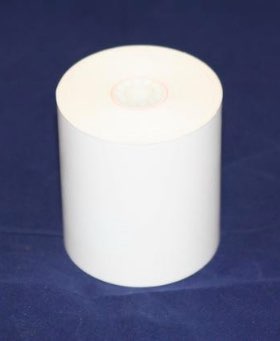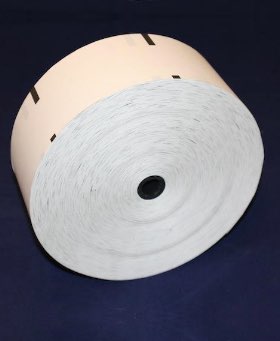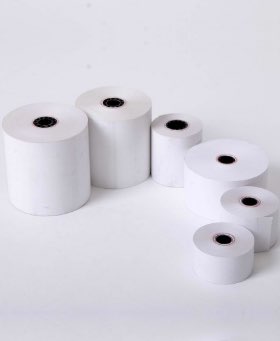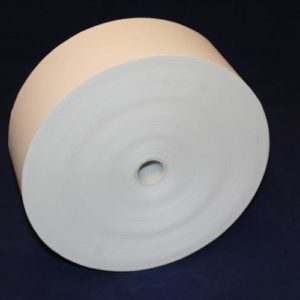
Know How Thermal Papers Can Benefit Healthcare By Improving Accuracy And Cutting Costs.
Using thermal paper can benefit healthcare organizations by increasing accuracy and reducing expenses. Thermal paper eliminates the need for manual handwriting, which can lead to errors due to poor handwriting or incorrect data entry. This further enhances accuracy by reducing the need for data entry errors and ensuring that information is stored in a secure, tamper-proof format.
The thermal paper also reduces costs associated with medical records management. By storing patient data securely using thermal paper, healthcare organizations can avoid the cost of manually printing and filing paper documents. Instead of purchasing expensive printers and paying for filing materials, healthcare organizations can save money using thermal paper to store important patient information securely.
What Is Thermal Paper And How Can It Benefit Healthcare?

Thermal paper is a special paper that uses heat-sensitive ink to record and store information. This means it can be used instead of traditional printing or handwriting on paper documents. Thermal paper offers several advantages over regular paper, including improved accuracy, reduced costs, and increased storage security. Thermal paper can especially benefit healthcare organizations, allowing them to record and store important patient information accurately and securely while cutting costs.
There are several factors when discussing how it benefits the health industry. Traditional thermal printing machines used to take up a lot of workspaces, while thermal printers are compact and portable. Moreover, it is more affordable to maintain. Vital information concerning the patients, like lab specimens, prescription labels, and necessary barcodes, are printed with great clarity.
How Thermal Paper Improves Accuracy And Reduced Costs In Healthcare?

Thermal paper rolls can help healthcare organizations to improve accuracy and reduce costs associated with medical records management. Thermal paper eliminates the need for manual handwriting, increasing accuracy by eliminating errors caused by poor handwriting or incorrect data entry. It is also much more durable than traditional paper, meaning it won’t tear or fade over time. This further enhances accuracy by reducing the need for data entry errors and ensuring that information is stored in a secure, tamper-proof format.
The thermal paper also reduces costs associated with medical records management. By storing patient data securely using thermal paper rolls, healthcare organizations can avoid the cost of manually printing and filing paper documents. Instead of purchasing expensive printers and paying for filing materials, healthcare organizations can save money using thermal paper rolls to store patient information securely.
What Type Of Medical Applications Use Thermal Paper?
Thermal paper rolls are ideal for medical applications, especially those requiring accurate and secure patient information storage. Thermal paper can store data such as medical prescriptions, test results, and other important patient records. It is also commonly used in hospitals to print patient labels for identification purposes. Also, thermal paper is often used in medical devices and tools such as thermometers, X-rays, and ultrasounds.
Thermal paper is a great asset to the healthcare industry, providing accurate and secure patient data storage while at the same time reducing costs associated with medical records management. In addition, it eliminates the need for manual handwriting and is much more durable than traditional paper, ensuring that information is stored in a tamper-proof format. As a result, healthcare organizations can benefit greatly by using thermal paper rolls to store patient information securely.
The Advantages Of Using Thermal Paper In Healthcare

Thermal paper has become increasingly popular in healthcare settings due to its high printing speed, cost-effectiveness, and ease of use. However, as with any technology, it has advantages and disadvantages. Let’s understand the advantages of thermal paper in detail:
- Cost-effectiveness: One of the major advantages of using thermal paper is its cost-effectiveness. Compared to other types of paper, such as inkjet or laser, thermal paper is considerably cheaper, making it an ideal choice for healthcare facilities that need to print high volumes of documents regularly.
- Speed: Thermal printers are known for their high printing speed, allowing healthcare professionals to quickly print out diagnostic reports, prescriptions, and other documents. This can significantly reduce patient waiting times, improving the overall quality of care.
- Clear and readable prints: Thermal paper produces high-quality prints which are clear, readable, and durable. This is particularly important for healthcare settings where the accuracy and legibility of documentation are critical.
- Easy to use: Thermal printers are easy to use, requiring minimal training for healthcare professionals. They can be easily integrated into healthcare information systems, further simplifying printing and documentation processes.
How To Choose The Right Type Of Thermal Paper For Your Healthcare Needs?

Although thermal paper can offer several advantages over traditional paper, choosing the right type for your healthcare needs is important. It is important to consider factors such as the durability of the paper and its sensitivity to heat when selecting a type of thermal paper. Additionally, you should also consider the size and color of the paper when making your selection. However, when choosing thermal paper, it is important to consider factors such as durability, sensitivity to heat, size, and color. By considering these factors, healthcare organizations can ensure they choose the right type of thermal paper for their needs.
Thermal papers offer healthcare providers exactly what they need: an accurate way to track information in a cost-saving form factor. In addition, patients benefit from the added privacy associated with an insulated record-keeping system that is more difficult to tamper with or breach. Through the continued development of thermal paper technology, we can continue to bridge the gap between today’s health systems and tomorrow’s pioneering advances in medical technology.
Conclusion
Thermal paper is an excellent material that could revolutionize the healthcare industry by improving accuracy while cutting costs. Thermal papers also have the potential to make patient records more secure and easily accessible. With thermal paper available in many forms—thermal labels, wristbands, and file folders—the possibilities for better healthcare are almost endless. Although there is still much room for improvement, this technology has already improved the lives of patients and professionals in several ways. Its durability, versatile use cases, and affordability make it a worthy addition to any health system’s toolset.
















